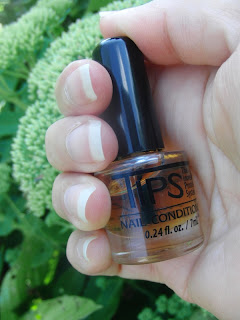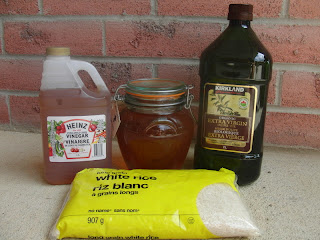
Testimonial: How TIPS Nail Conditioner helped
Before Photo: sent to us by Monica showing her detached nails
After Photo: The re-attached nails after using TIPS Nail Conditioner for several weeks.
Dear ASK Cosmetics:
I began using your product (T.I.P.S. Nail Conditioner) about 7 weeks ago, and
I am amazed at the results. Approximately 6 years ago, my fingernails began to
detach from my nail beds. I had suffered from Carbon Monoxide poisoning, and
whether or not this was a contributing factor, I don't know. But, up until this point
my nails were strong, grew rapidly and were very healthy.
When they began to detach, I sought medical attention. My own physician had
no explanation for my nail problem and referred me to a dermatologist. This
specialist also had no explanation and told me I suffered from Onycholysis.
Basically, he told me my hands were in water too much. I began wearing
gloves for virtually every task I had to do. After months of following his
instructions, my nails did not improve at all. (This dermatologist was one
of three that I consulted). To make a long story short, I have spent a
fortune on prescriptions, Tea Tree Oil, products from a Natural Health Food
Store, etc. etc.
I happened to mention my problem to a friend who indicated that she had
suffered from the same problem. She had fallen, hit her head, and her nails
detached from her nail beds. Her physician indicated to her, that nails
could detach from the nail bed due to Trauma. She suggested I try T.I.P.S.,
as she had had great success with your product.
I am so grateful for her suggestion! As my nails grow, they are reattaching
to my nail beds. Once I started noticing a difference (after approximately
2 weeks of use), I took a picture of 3 of my nails. Now, 7 weeks later,
I've taken another picture. You can see for yourselves in the photos I am
sending, the difference.
I will definitely be promoting your product to friends, colleagues, and
family members. Thank you!
Best regards,
Monica from Oshawa
I began using your product (T.I.P.S. Nail Conditioner) about 7 weeks ago, and
I am amazed at the results. Approximately 6 years ago, my fingernails began to
detach from my nail beds. I had suffered from Carbon Monoxide poisoning, and
whether or not this was a contributing factor, I don't know. But, up until this point
my nails were strong, grew rapidly and were very healthy.
When they began to detach, I sought medical attention. My own physician had
no explanation for my nail problem and referred me to a dermatologist. This
specialist also had no explanation and told me I suffered from Onycholysis.
Basically, he told me my hands were in water too much. I began wearing
gloves for virtually every task I had to do. After months of following his
instructions, my nails did not improve at all. (This dermatologist was one
of three that I consulted). To make a long story short, I have spent a
fortune on prescriptions, Tea Tree Oil, products from a Natural Health Food
Store, etc. etc.
I happened to mention my problem to a friend who indicated that she had
suffered from the same problem. She had fallen, hit her head, and her nails
detached from her nail beds. Her physician indicated to her, that nails
could detach from the nail bed due to Trauma. She suggested I try T.I.P.S.,
as she had had great success with your product.
I am so grateful for her suggestion! As my nails grow, they are reattaching
to my nail beds. Once I started noticing a difference (after approximately
2 weeks of use), I took a picture of 3 of my nails. Now, 7 weeks later,
I've taken another picture. You can see for yourselves in the photos I am
sending, the difference.
I will definitely be promoting your product to friends, colleagues, and
family members. Thank you!
Best regards,
Monica from Oshawa















